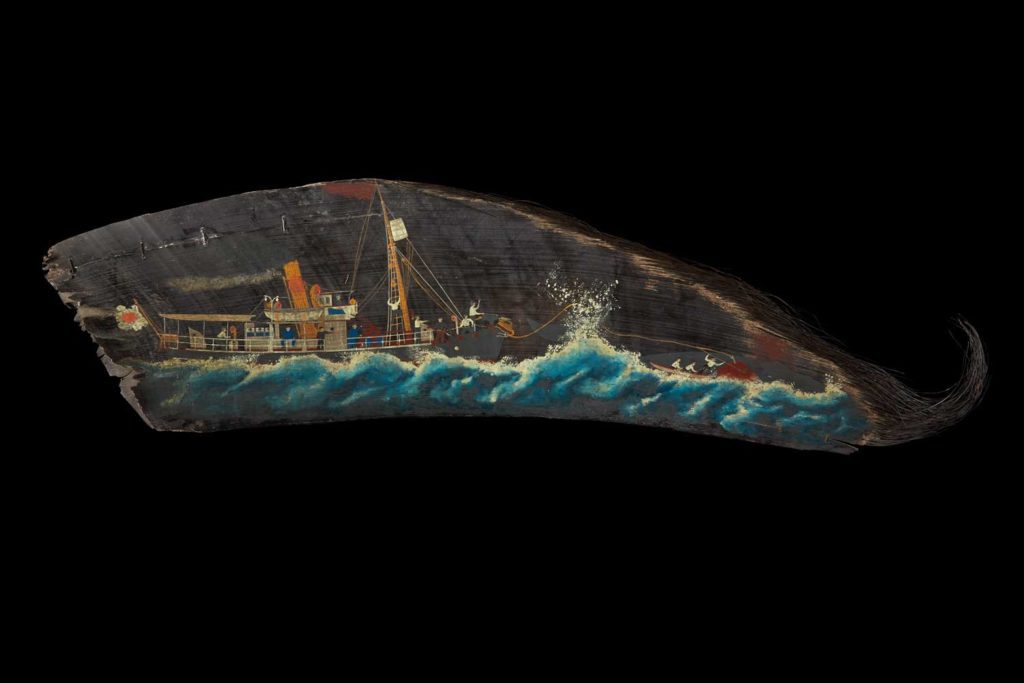
The detailed yet shocking scene illustrated on this object does in fact give us a clue as to what it is. It depicts a hunting scene: a small boat has set out from the larger Japanese whaler and the crew are in the act of spearing their prey. The ‘canvas’ is a baleen plate from the mouth of a whale very like the one pictured.
Some types of whales are toothless, instead they are filter feeders. They have long strips of baleen which hang from the roofs of their mouths. These whales are called baleen whales and they range in size from the giant blue whale to the relatively small pygmy right whale. They eat krill, plankton and small fish, gulping them in with huge mouthfuls of seawater. The baleen plates act like a filter, trapping the food.
Baleen plates are more commonly known as whale bone, but they are in fact made of keratin. This is the same substance found in our nails and hair and in the hooves and horns of cows. Baleen is strong and flexible, even when cut into small strips. It was widely used in the past for corsets, hooped petticoats, umbrella ribs, brushes and even springs for carriages.
Whales have been hunted all around the world for centuries. By the early 20th century, they were on the brink of extinction. Catching methods had become more sophisticated and efficient, ships were larger: something needed to be done. In 1986 members of the International Whaling Commission (IWS) agreed to a ban on hunting to allow numbers to recover. There were exceptions for scientific purposes and for subsistence fishing for certain indigenous peoples.
While most members are happy for a permanent ban on hunting whales, there are several countries that believe whaling should resume once numbers have stabilised. Japan withdrew from the IWS in 2019 and recommenced whale fishing with strict quotas.